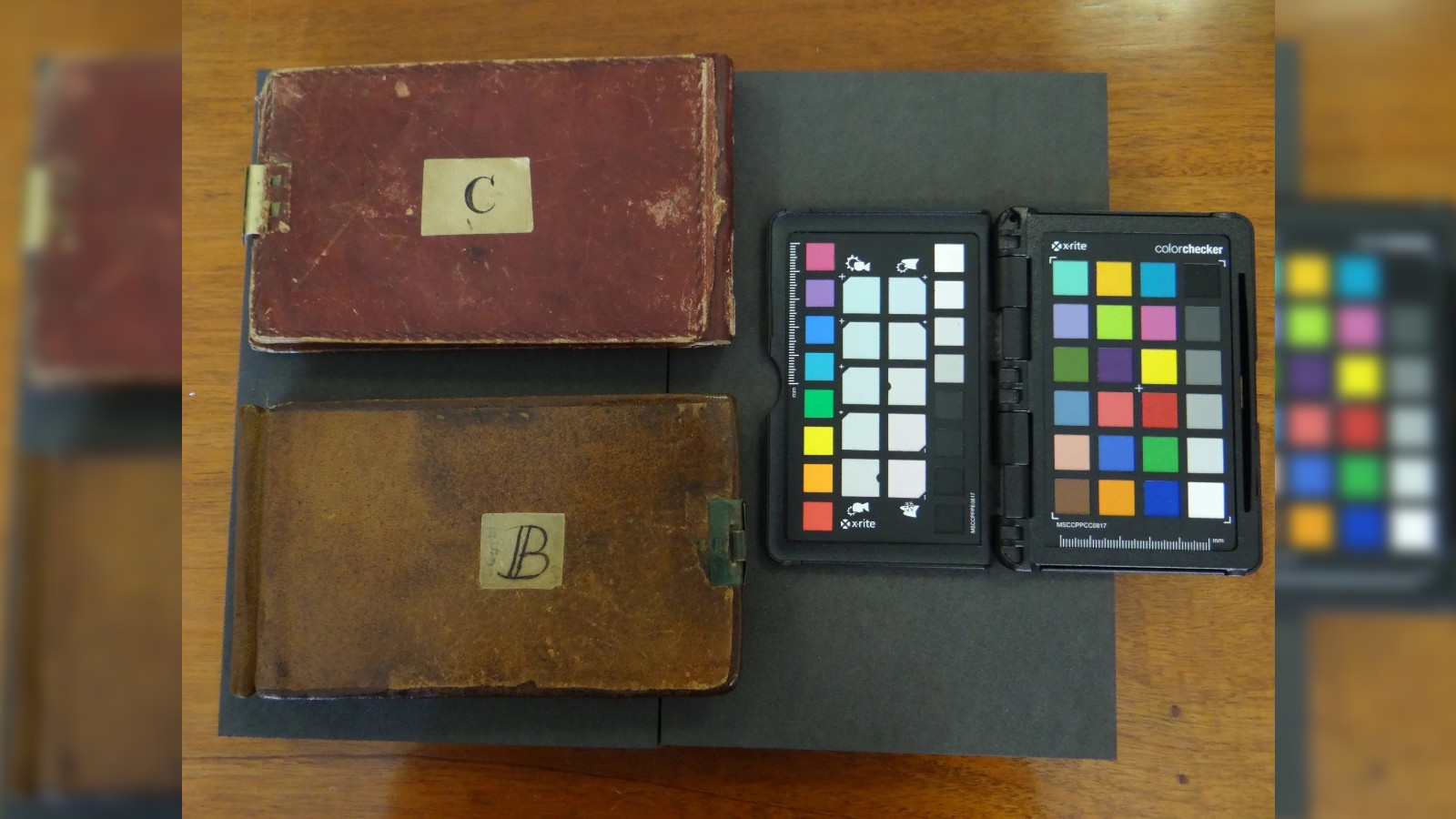Charles Darwin's stolen 'tree of life' notebooks returned after 20 years
The books were anonymously returned to the library they were stolen from.

A pair of Charles Darwin's iconic notebooks have been returned to their rightful home more than 20 years after they were mysteriously stolen. The contents of the notebooks include the naturalist's first doodle of the "tree of life," which he sketched out decades before formulating his theory of evolution by natural selection.
The notebooks are part of the Darwin Archive at Cambridge University Library in the U.K., which contains journals, manuscripts and more than 15,000 letters written by Darwin. The journals were originally stored in the library's high-security Special Collections Strong Rooms but were removed from storage in November 2000 for a photo shoot. Library officials assumed that the notebooks had been returned to safety after the photo shoot, but during a routine audit in January 2001, librarians discovered that the notebooks were missing. The library staff initially suspected that the notebooks had been misplaced, but in 2020, the staff conducted a new search for the documents — the largest in the library's history — and came up empty-handed. The library concluded that the notebooks had most likely been stolen, Live Science previously reported.
But now, they've finally turned up: Librarians found the notebooks March 9 outside the door of a fourth-floor office in the 17-story building. The journals were swathed in plastic wrap and left in a box inside a bright-pink gift bag, along with a printed note that read "Librarian Happy Easter X," according to a statement from the library.
"My sense of relief at the notebooks' safe return is profound and almost impossible to adequately express," Jessica Gardner, a librarian at Cambridge University Library, said in the statement. "I was heartbroken to learn of their loss, and my joy at their return is immense."
Related: 6 weird animals that evolution came up with
The leather-bound notebooks are in "remarkably good condition," and all the pages are accounted for, according to the statement. Experts think the notebooks have barely been handled, and special analysis of the ink has confirmed that the notebooks are almost certainly genuine, according to the BBC.
The notebooks are part of the "Transmutation Notebooks," a collection of journals in which Darwin first laid out his ideas of how animals transmute, or change, over time, which we now know is the result of adaptations caused by genetic mutations in DNA. The recently recovered books were the second and third installments of the Transmutation Notebooks and are labeled "B" and "C." Darwin wrote the Transmutation Notebooks in 1837, when he was 28 years old, shortly after returning from his five-year voyage around the world on the HMS Beagle.
Sign up for the Live Science daily newsletter now
Get the world’s most fascinating discoveries delivered straight to your inbox.

The standout feature of the notebooks is a sketch of a rudimentary tree of life in notebook B showing how species diverge from a common ancestor over time, above which he simply wrote, "I think." This was more than 20 years before Darwin published his theory of evolution in the book "On the Origin of Species" in 1859. "They may be tiny, just the size of postcards, but the notebooks' impact on the history of science cannot be overstated," Gardner said in the statement.
The library will reunite the notebooks with the rest of the Darwin Archive at Cambridge University Library, alongside the archives of other famous scientists, such as Sir Isaac Newton and Stephen Hawking, according to the statement. The three scientists are also buried right next to each other at Westminster Abbey in London, Live Science previously reported.
Members of the public can see the notebooks when they go on display as a part of the "Darwin in Conversation" exhibition showcasing Darwin's letters and notebooks at Cambridge University Library in July. The exhibition will also be transferred to the New York Public Library in 2023. Digital copies of the two notebooks, B and C, can be viewed online.
Police are continuing to investigate the notebooks' disappearance, but currently, there are no clues as to who stole the notebooks or where they have been for the past 20 years.
Originally published on Live Science.

Harry is a U.K.-based senior staff writer at Live Science. He studied marine biology at the University of Exeter before training to become a journalist. He covers a wide range of topics including space exploration, planetary science, space weather, climate change, animal behavior and paleontology. His recent work on the solar maximum won "best space submission" at the 2024 Aerospace Media Awards and was shortlisted in the "top scoop" category at the NCTJ Awards for Excellence in 2023. He also writes Live Science's weekly Earth from space series.










